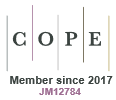Just Accepted
This article has been peer reviewed and accepted for publication. It is in production and has not been edited, so may differ from the final published form.
Investigation of the Relationship Between Meat Fatty Acids and the Expression Levels of Genes Associated with Lipid Metabolism in Kivircik and Hungarian Merino Sheep
Abstract
Context. Depending on the degree of saturation, fatty acids can be saturated (SFA) or unsaturated (UFA: monounsaturated (MUFA) or polyunsaturated (PUFA) structures) and are of vital importance in energy production, metabolic processes, and structural activities in living organisms. Maintaining human health requires restricting the dietary intake of saturated fats while increasing the intake of UFAs. In this context, it is important for the livestock sector to develop animal improvement programs aimed at reducing the saturated fat content and increasing the unsaturated fatty acid content of animal products. Aim. This study aimed to investigate the expression levels of genes related to lipid metabolism (PPAR-α, PPAR-γ, PCK2, SCD, LEP, FABP4, and FASN) with SFAs, MUFAs, and PUFAs found in the longissimus dorsi muscle in the Kivircik and the Hungarian Merino. Methods. The study involved 10 Kivircik and 10 Hungarian Merino, weaned at 90 days of age. After the lambs were slaughtered, tissue samples were taken from the longissimus dorsi muscle to be used for fatty acid and gene expression analyses. Key results. The determining genes identified for the MUFAs included the LEP gene for all fatty acids, excluding C16:1, C17:1 and C18:1 in the Kivircik lambs, and the SCD gene for C14:1 and the PPAR-γ gene for C22:1 in the Hungarian Merino lambs. The determining genes identified for the PUFAs included the LEP gene for the n3-PUFAs in the Kivircik lambs and PPAR-α, PCK2, SCD, and LEP in the Hungarian Merino lambs. Conclusions. This study suggests that the PPAR-α, PPAR-γ, PCK2, SCD, and LEP genes, all of which are involved in adipogenesis, are potential candidate genes for animal breeding programs aimed at modifying fatty acid profiles in ovine breeds. This suggestion is based on their expression levels being particularly correlated with unsaturated fatty acid profiles. Implications. Among the genes investigated in this study, LEP offers potential for use in animal breeding programs aimed at MUFAs, n3-PUFAs, and n6-PUFAs. Given the impact of PUFAs, including omega-3 and omega-6, on human health, this study's identification of genes correlated with specific fatty acids is expected to contribute to the discovery of potential alternative therapeutic agents.
AN25020 Accepted 14 July 2025
© CSIRO 2025



